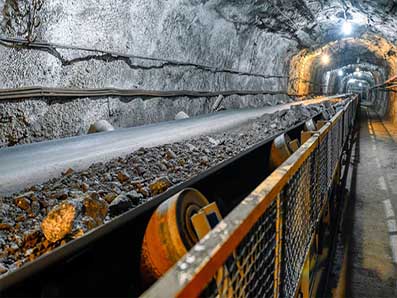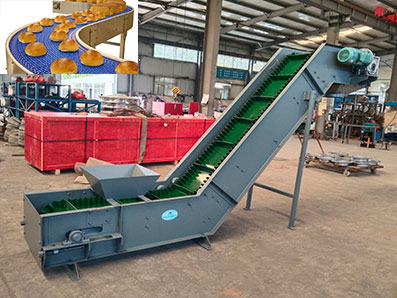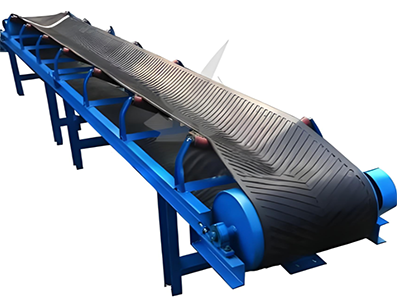
Heavy duty conveyor belt
Heavy duty conveyor belts are designed to carry heavy loads, resist wear and impact, and are suitable for conveying high-intensity materials in mining, ports, metallurgy, and other applications.
Length: Customizable (10m-1000m)
Width: 500-3000mm (can be customized in strips)
Conveyor Speed: 0.5-5m/s (adjustable)
Conveying Capacity: 100-5000t/h (depending on belt width and speed)
Material: Multi-layer EP/NN rubber + steel wire rope (wear-resistant and impact-resistant)
Heavy duty conveyor belt is a robust conveying solution engineered to transport heavy, bulky, or abrasive materials under extreme conditions, featuring high tensile strength, impact resistance, and durability for industrial applications like mining, construction, and recycling.
What is Heavy duty conveyor belt?
Heavy duty conveyor belts are industrial conveyor belts designed for high-intensity, demanding working conditions. Made primarily of rubber, they offer excellent wear and tear resistance, along with high load-bearing capacity. Some products also incorporate flame-retardant and corrosion-resistant materials. They often utilize multi-layer braiding or steel cord reinforcement, ensuring stable conveyance of heavy, bulky, or rough materials. Conveying distances can be flexibly adjusted based on project requirements. By splicing multiple sections or strategically arranging drive units, continuous conveying over distances ranging from several kilometers to tens of kilometers is possible, making them suitable for large-scale material handling applications such as mines and ports.

The core components of a heavy duty conveyor belt include: a load-bearing layer made of high-strength synthetic fiber or steel wire rope, providing tensile and tear resistance; a cover layer made of wear- and corrosion-resistant rubber or polymer, protecting the load-bearing layer and enhancing friction; a carcass layer, some featuring a three-dimensional woven, rubberized canvas fabric. The warp yarns are bundled to provide three-dimensional support, enhancing impact and puncture resistance; and an edge reinforcement layer, enhancing wear resistance at the belt edges and preventing wear and tear.
Key Features of Heavy duty conveyor belt
Heavy duty conveyor belt feature a high-strength, wear-resistant, and corrosion-resistant frame. Designed for heavy loads, they can carry materials ranging from several to hundreds of tons. They also feature special features such as anti-slip and impact protection.
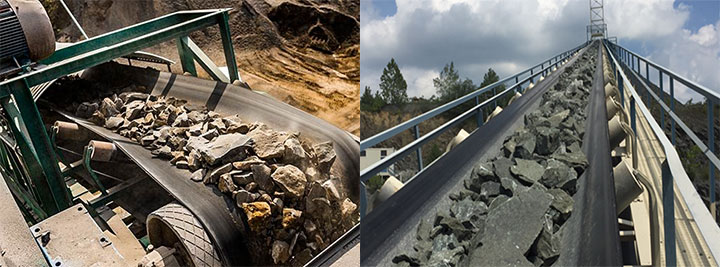
High-Strength Materials: High-strength materials typically utilize multiple layers of polyester (EP), nylon (NN), or steel cord as the frame, providing extremely high tensile strength and impact resistance. The cover layer is made of wear-resistant rubber (such as SBR, NR) or PVC/PU. Some models also feature tear-resistant fiber or metal reinforcement.
Abrasion and Corrosion Resistance: These materials are wear-resistant and corrosion-resistant. The surface rubber cover can be 5-20mm thick, effectively protecting against abrasion from sharp materials such as ore, coal, and scrap steel. Furthermore, some models are oil-resistant, high-temperature resistant (up to 200°C), or flame-retardant.
Heavy duty Conveyor Belt Design: This material features a Heavy duty design capable of carrying materials weighing several to hundreds of tons, making it ideal for long-distance, high-speed conveying applications such as mines and ports.
Specialized Structure: This special structural design features anti-slip features achieved through the addition of guide strips or sidewalls (such as corrugated sidewalls). It also features an impact-resistant design with a cushioning layer at the bottom to prevent damage from falling materials.
Heavy duty Conveyor Belt Technical Parameters
| adoption | (taxonomical) form |
type (Belt/Strong) N/mm) |
Belt Dimensions | Belt width (mm) | |||||||||||||
| number of plies | core species | Cover rubber thickness (mm) |
Belt thickness (mm) |
Reference weight (kg/㎡) |
500 | 600 | 700 | 750 | 800 | 900 | 1000 | 1050 | 1200 | ||||
| surface | underside | ||||||||||||||||
|
Cut-resistant For large-bulk transport |
Monoply Belt™ | L(250) | 1 | NS: Nylon special woven canvas | 4.0 | 3.0 | 8.6 | 10.1 |
✓ |
✓ | ✓ | ✓ | ✓ | ||||
| SL(315) | 4.0 | 3.0 | 9.1 | 10.9 | ✓ | ✓ | ✓ | ✓ | ✓ | ||||||||
| M(400) | 4.0 | 3.0 | 9.6 | 11.4 | ✓ | ✓ | ✓ | ✓ | ✓ | ||||||||
| 6.0 | 3.0 | 11.6 | 13.8 | ✓ | ✓ | ||||||||||||
| H(500) | 4.0 | 3.0 | 9.9 | 11.6 | ✓ | ✓ | ✓ | ||||||||||
| 6.0 | 3.0 | 11.9 | 13.6 | ✓ | ✓ | ✓ | |||||||||||
| Rock Belt™ | No.0 | 2 | NS: Nylon special woven canvas | 6.0 | 3.0 | 11.9 | 13.7 | ✓ | ✓ | ✓ | ✓ | ||||||
| No.1 | 6.0 | 3.0 | 11.9 | 13.7 | ✓ | ✓ | ✓ | ✓ | |||||||||
| No.2 | 6.0 | 3.0 | 12.8 | 13.7 | ✓ | ✓ | ✓ | ||||||||||
What are the common types of Heavy duty conveyor belt?
Common Heavy duty conveyor belt types include: multi-layer fabric core belts for strong tensile strength, corrugated sidewall belts to prevent material slippage at high angles, tubular belts for leak resistance, and steel cord core belts (ST type) for exceptional load-bearing capacity.
Multi-layer fabric core conveyor belts: Made of multiple layers of cotton, nylon (NN), or polyester (EP) fabric, they offer high tensile strength and are suitable for medium- and long-distance conveying of heavy materials such as ore and coal. They are economical and durable.

Corrugated sidewall conveyor belts: Equipped with sidewalls and cross-partitions, they can reach an inclination of up to 60°, making them suitable for lifting bulk materials (such as grain and sand and gravel) at steep angles or vertically, preventing them from slipping.
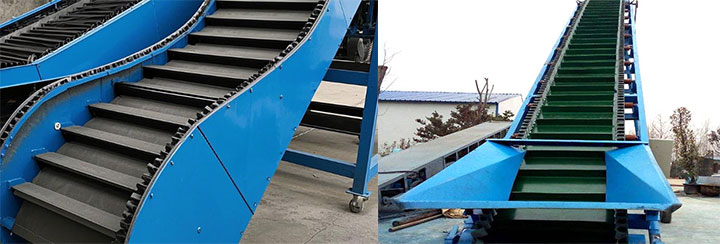
Tubular conveyor belts: Closed in a circular tube, they prevent dust leakage and are suitable for conveying materials in curved areas with strict environmental requirements, reducing material waste and environmental pollution.

Steel cord conveyor belts (ST type): Containing high-strength steel cord, they are impact- and tear-resistant, making them suitable for long-distance, high-volume transport (such as ports and mines). With a maximum strength of 8,000 N/mm, they offer exceptional load-bearing capacity.

What is the difference between Heavy duty conveyor belt and light-duty conveyor belts?
Heavy duty conveyor belt are suitable for handling heavy loads, bulky, or high-temperature materials in harsh environments (such as mines and cement plants). Light-duty conveyor belts are suitable for handling lightweight, small, or food-grade materials, requiring frequent cleaning, or in confined spaces (such as food factories and electronics workshops). Heavy duty and light-duty conveyor belts differ in terms of material, conveying distance, applicable environments, and applications.
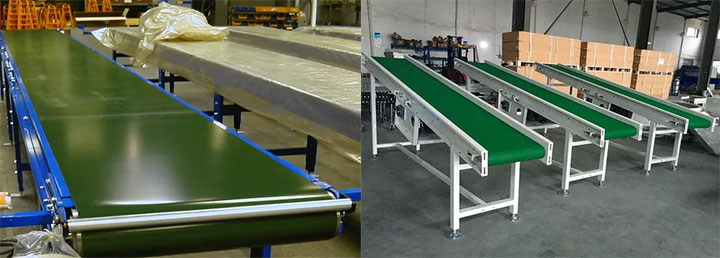
Material Differences
Heavy duty conveyor belt: Crafted from high-strength materials, these belts feature a high-strength polyester, nylon, or steel cord core and a thick rubber cover (≥6mm). These belts have a multi-layer composite structure (3-9 layers) and are wear-, impact-, and corrosion-resistant. Some belts are flame-retardant or heat-resistant, and offer strong puncture resistance.
Light-duty conveyor belts: Crafted primarily from lightweight materials, these belts feature a PVC, PU, or thin fabric core with low tensile strength (≤200N/mm) and a thin cover (0.5-3mm). These belts come in single or double-layer constructions and are lightweight, flexible, and some are food-grade.
Conveyor Distance Differences
Heavy duty conveyor belt: Designed for long distances and high transport volumes, these belts can reach several kilometers in length. They can be driven by high-powered drives for efficient, continuous transport. Some belts feature sidewalls or patterns to accommodate vertical lifts, complex terrain, and high-angle transport.
Light-duty conveyor belts: Focused on short-distance, flexible transport, these belts typically extend no more than 100 meters in length and are bendable and foldable, making them suitable for smaller equipment or space-constrained applications.
Differences in Applicable Environments
Heavy duty conveyor belt: Specialized for harsh working conditions, they are resistant to high temperatures (150-300°C), acid and alkali corrosion, and can absorb material impact. They also feature UV-resistant and waterproof designs for outdoor use, making them suitable for outdoor environments (such as mines and ports).
Light-duty conveyor belts: Suitable for clean, mild indoor environments. Made of PU material that meets food standards and is anti-static, they are sensitive to temperature and humidity and should be avoided in extreme environments.
Different Industry Applications
Heavy duty conveyor belt: Dominate heavy industries such as mining, metallurgy, and building materials, transporting bulk materials like coal and iron ore. Corrosion and high-temperature resistance are crucial, and port logistics relies on their long-distance, high-volume advantages.
Light-duty conveyor belts: They are particularly well-suited for light industries such as food processing, packaging logistics, and electronic pharmaceuticals. In food processing, the transport of bread and meat requires compliance with hygiene standards and easy maintenance. In packaging logistics, sorting express deliveries and parcels requires high-speed, precise positioning. In the electronic pharmaceutical industry, transporting precision parts or pharmaceuticals requires anti-static and low-pollution properties.
The Difference Between Heavy duty conveyor belt and Other Types
Heavy duty conveyor belt are more load-bearing and wear-resistant than other conveyor belts, making them suitable for harsh environments. They often use a high-strength canvas or steel cord core covered with a thick rubber outer layer, enabling them to transport bulky or heavy materials such as sand, gravel, and coal over extended periods.
Industrial conveyor belts have a wider range of applications, transporting packaged goods, parts, grain, and more. They are made of a variety of materials (PVC, PU, rubber, etc.) and prioritize speed, stability, and cleanliness.
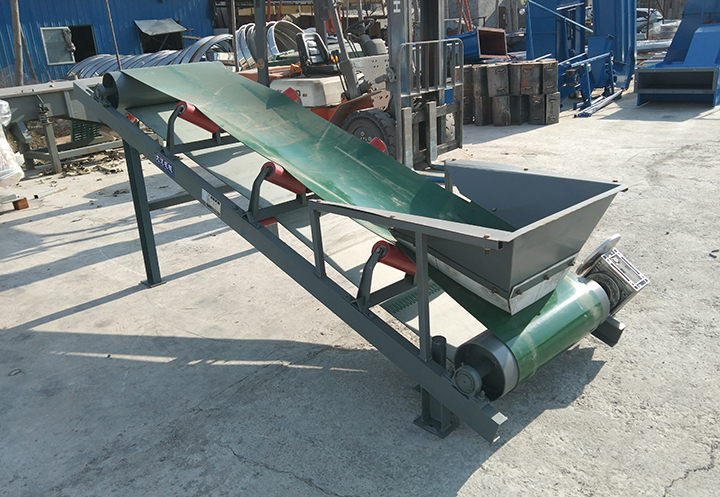
Quarry conveyor belts are a type of Heavy duty conveyor belt, designed for impact and cut resistance, suitable for harsh conditions such as high dust and wet mud.
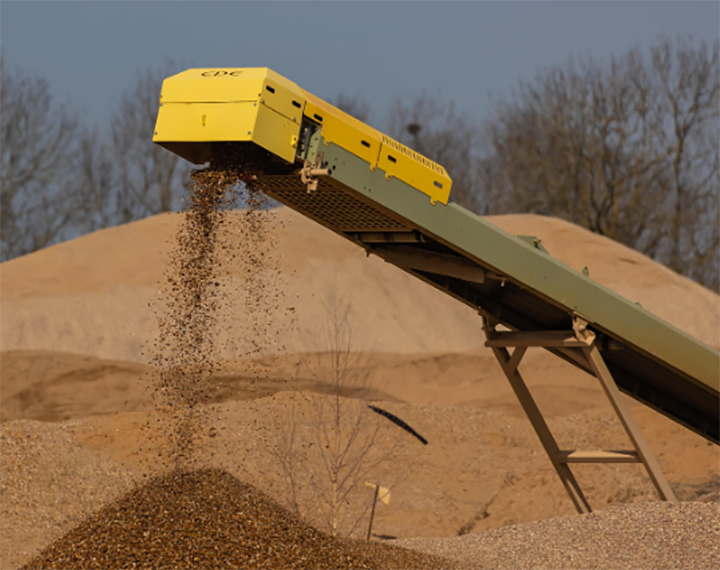
Elevator conveyor belts are used for conveying materials vertically or at steep angles. They typically feature anti-slip baffles or bucket structures, emphasizing slip resistance and increased efficiency.

Typical Applications of Heavy duty conveyor belt
Heavy duty conveyor belt have a wide range of applications. In the mining and metallurgical industries, they can transport iron ore, coal, limestone, and other materials. In ports and logistics, they can load and unload bulk cargo such as grain and fertilizer, as well as containerized cargo. In the building materials industry, they transport cement, sand, gravel, and asphalt. In waste disposal, they can sort sharp waste such as scrap steel and construction waste. In agriculture and heavy industry, they can also transport lumber, fertilizer, and heavy machinery parts.

